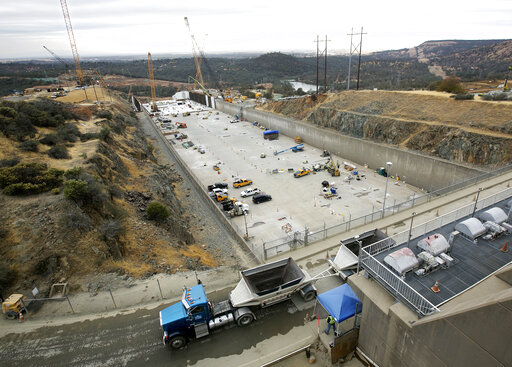Two dozen aging dams in Colorado were in unsatisfactory condition and are located in places where their failure would likely kill at least one person, according to an Associated Press investigation that found at least 1,688 such dams nationwide.
The 24 Colorado dams range in age from 41 to 127 years old and are used for irrigation, recreation and drinking water supply, according to public records obtained by the AP during the more than two year investigation. They are spread among 16 counties, with El Paso having four, Jefferson three and Mesa and Park counties having two each.
Records show the dams are up-to-date with their inspections, and all have emergency action plans in case of a failure. In addition, work is underway or planned for some of the dams, and at least one in El Paso County, South Lake dam, has been repaired, said Bill McCormick, chief of Colorado Dam Safety at the state Division of Water Resources.
Twenty-one of the 24 Colorado dams are privately owned or owned by local governments, and the decision to fix a dam is the owner’s, McCormick said. State regulators can order a reservoir’s water level lowered to a safe level if a dam is in unsatisfactory condition or drain the reservoir if there is no safe level.
“If owners can live with less than full storage, they may not have the incentive to fix their dam,” he said in an email to the AP. “We try to incentivize owners to fix their dams, but the decision is theirs.”
One of the 24 dams is at Smith Reservoir in Lakewood, a west Denver suburb. Officials are restricting the amount of water in the reservoir because of high seepage when the water level is within 2 feet of the spillway, according to a 2018 inspection report.
Engineers’ models show that if the privately owned dam failed, water from the Smith Reservoir would flow east 7 miles through residential and industrial areas until it reached the South Platte River, according to a 2017 emergency action plan.
In September, the Federal Emergency Management Agency awarded Colorado over $260,000 to conduct risk assessments and repair high-hazard dams, the term used to describe a structure whose failure would likely result in at least one death.
Officials plan to put part of that money toward designing a fix for the leaking area at the Smith Reservoir dam, McCormick said.
Since 1950, there have been six major dam failures in Colorado, according to a 2018 Colorado State Hazard Mitigation Plan. They include the 1982 Lawn Lake Dam failure in Larimer County that killed four people and caused $31 million in property damage.
With Colorado’s growing population, more people moving into downstream communities will be exposed to potential dam failure. State officials said in the hazard mitigation plan that El Paso and Larimer’s exposure will be considered “extreme” with projected population increases of 36% and 42%, respectively, between 2010 and 2030.
State officials have identified 24 high-hazard dams in El Paso County, and those that the AP investigation found are in unsatisfactory condition are the South Lake, Teller, Valley No. 1 and Valley No. 2 dams.
There are 54 high-hazard dams in Larimer County, but none were listed in unsatisfactory condition as of 2018, according to the AP investigation.
The 24 Colorado dams were identified in a two-year investigation by the AP in which it found at least 1,680 dams nationwide rated as high-hazard and considered to be in poor or unsatisfactory condition.
Emergency plans obtained by the AP indicate that thousands of people living and working downstream could be at risk if those dams were to catastrophically fail, while separate inspection reports cite a variety of problems. Those include leaks that can indicate a dam is failing internally, unrepaired erosion, holes from burrowing animals and extensive tree growth, which can destabilize earthen dams. In some cases, inspectors also flagged spillways that are too small to handle the amount of water that could result from increasingly intense rainstorms due to a changing climate.
The AP’s investigation covers the U.S. territory of Puerto Rico but excludes five states that did not fully comply with records requests.
About the photo: In this Oct. 19, 2017, file photo, work continues to repair the damaged main spillway of the Oroville Dam in Oroville, Calif. A new federal grant program is providing $10 million to 26 states, including California, with high hazard dams in need of repairs. (AP Photo/Rich Pedroncelli).
Was this article valuable?
Here are more articles you may enjoy.


 Verlan Files Subro Suit Against Georgia Chemical Plant After $20M Payout on Fire
Verlan Files Subro Suit Against Georgia Chemical Plant After $20M Payout on Fire  Atmospheric River to Flood Pacific Northwest Through Week
Atmospheric River to Flood Pacific Northwest Through Week  Zillow Deleting Climate Risk Scores Reveals Limits of Flood, Fire Data
Zillow Deleting Climate Risk Scores Reveals Limits of Flood, Fire Data  ‘Super Roofs’ Are Rewarding Insurers, Cat Bond Investors and Homeowners
‘Super Roofs’ Are Rewarding Insurers, Cat Bond Investors and Homeowners 